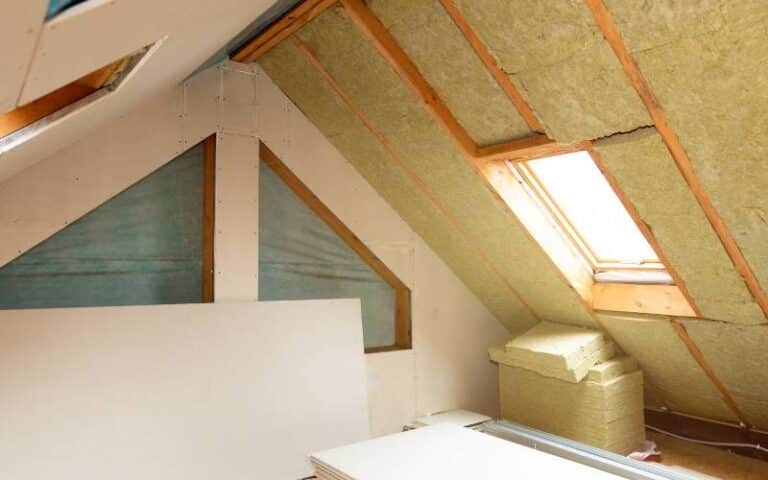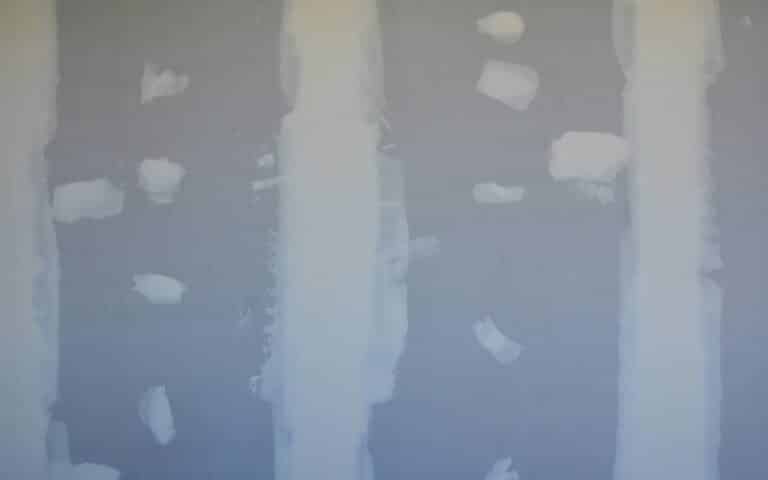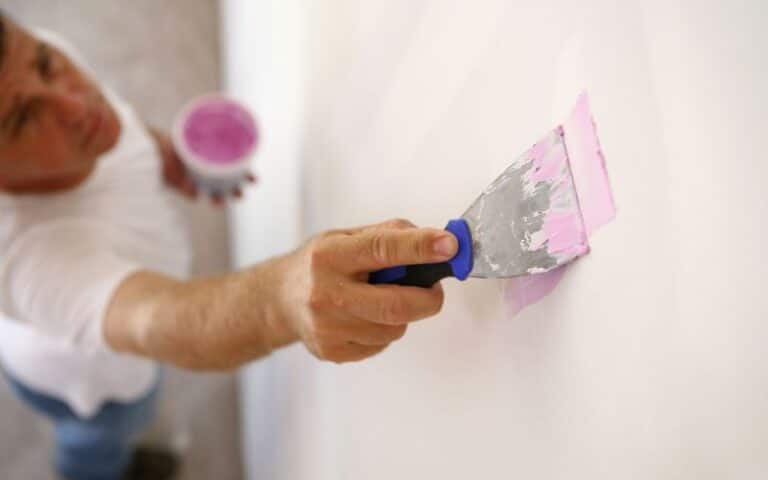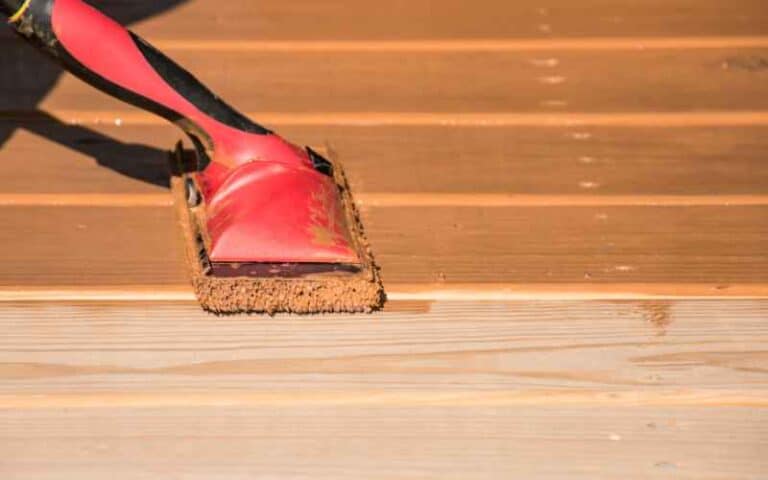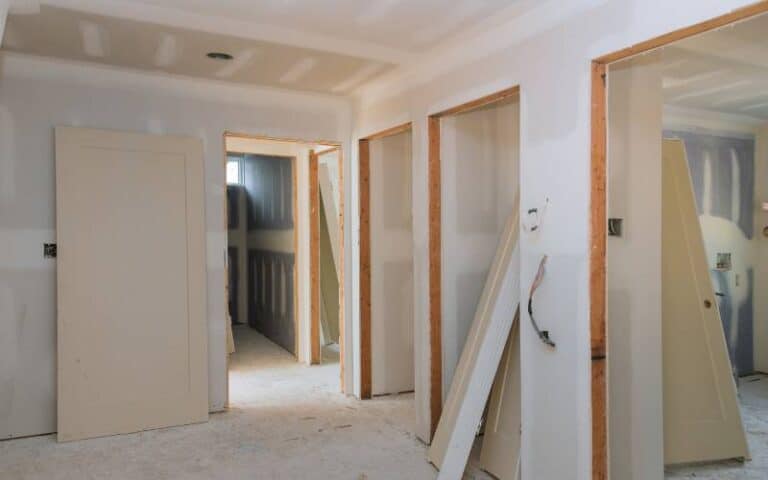Gaps between the drywall and concrete hall in your space can be frustrating, especially if you lack experience in construction.
Whether you’re renovating or want to spruce up your living space and notice a gap between your drywall and concrete wall that makes you feel disturbed, this article is for you.
This issue is quite common among homeowners; hence, you must understand the size, purpose of the gap, and other necessary information.
Professionals recommend leaving gaps between drywall and concrete wall. The gap has its advantages, and one of them is that it allows your building to move and settle, i.e., expand and contract over time without causing cracks and damage to your drywall. Meanwhile, it’s worth noting that the gaps shouldn’t be too wide to prevent unwanted occurrences.
In this article, I will explain the various purposes of the gaps between drywall and concrete wall and reveal the ideal and recommended size of the gaps.
I will also explain the potential problems the gaps can cause if they are too wide, and the best methods to fix such an issue, making you achieve a flawless wall surface.
Ready for a Drywall Quiz?
Should There Be a Gap Between Drywall and Concrete Wall?

Yes, it’s a good practice to leave a gap between drywall and concrete walls. When installing drywall over concrete, leaving a small gap between the two materials is recommended.
The small gap is also known as a “drywall gap,” “control joint,” or “expansion joint.”
Meanwhile, it’s essential to note that the gap size may depend on the specific installation and the conditions in the area where you intend to install the drywall.
For instance, a wider gap may be necessary to prevent moisture from penetrating the drywall in areas with high humidity or moisture.
However, the generally recommended gap size is between 1/4 inch and 1/2 inch.
The primary reason for leaving this small gap is to give room for movements or settling of the building over time.
Concrete walls, for example, can experience small movements or cracks due to changes in temperature or humidity over time, and this can cause the drywall to crack.
Therefore, by leaving a small gap between the drywall and the concrete wall, you can prevent the drywall from cracks and damage during the movement and settling of the wall.
In addition, another function of the gap is that it helps with sound insulation and prevents the transfer of sound vibrations from the concrete wall to the drywall.
How to Fix Wide Gaps Between Drywall and Concrete?
While leaving gaps between drywall and concrete wall is necessary, leaving wide gaps can result in problems; hence, you should find immediate solutions to the wall you notice have wide gaps.
It’s worth noting that regardless of the method you choose, you must first measure out the recommended gap size, then proceed with any of the solutions.
So, if you notice a wide gap between drywall and concrete wall in your space, there are several practical solutions you can consider, and here are some of them.
#1. Apply Drywall Mud
Applying drywall mud is one of the ways to fix wide gaps between drywall and concrete wall. If the gap is small, you can apply drywall mud to create a smooth surface.
Apply the mud with a putty knife, sand it down once it dries, and paint with high-quality paint.
#2. Use a Backer Rod and Caulk
One of the practical solutions to fix a wide gap between drywall and concrete wall is to insert a backer rod and caulk into the gap.
A backer rod is a foam material that fills large gaps before caulking. Insert the backer rod into the gap to fill it up, and then apply caulk on top of the backer rod to seal the gap.
#3. Install Furring Strips
Furring strip installation is the next solution if the gap is too wide for caulk and backer rods.
Furring strips are thin wooden strips attached to the concrete surface, with drywall screwed onto the strips.
#4. Install a Trim Piece
Another solution to a wide gap between drywall and concrete wall is to install a trim piece over the gap.
This trim piece can be decorative or functional, covering the gap and creating an even and seamless finish.
Above all, choosing the appropriate solution for the gap size is necessary.
However, it would be better to contact a professional or experienced contractor if you need help determining which option is best for you.
What Can You Put Between Drywall and Concrete Floor?
Depending on the project you are working on, you can put various materials between drywall and concrete.
Below are some common materials that you can put between drywall and concrete:
#1. Furring Strips
These are thin strips of wood or metal installed to the concrete wall providing a surface to which the drywall can be screwed or nailed.
Furring strip installation helps create an air gap between the drywall and the concrete, improving insulation and reducing the risk of moisture buildup.
#2. Insulation
Installing insulation between the drywall and concrete can improve energy efficiency and soundproofing.
One common way to create insulation between drywall and concrete is to install foam board insulation or fiberglass batts.
#3. Vapor Barrier
A vapor barrier is another material that you can put between drywall and concrete wall. A vapor barrier is a material that prevents moisture from penetrating through the wall assembly.
You can install it in areas where there are chances of high humidity and water buildups, such as the kitchen, toilets, etc.
#4. Soundproofing Material
If sound transmission concerns you during construction, use soundproofing materials.
For instance, you can use mass-loaded vinyl or acoustic foam between the drywall and concrete to help you regulate the sound transmission in your building.
#5. Resilient Channels
Resilient channels are metal channels installed perpendicular to the wall studs, creating a gap between the drywall and concrete walls.
The gap created between the drywall and concrete wall helps to reduce sound transmission.
All the materials mentioned above have their specific functions. Hence, your working area and the type of finish you want will determine the specific material.
Is It Safe to Use an Orbital Sander to Fill the Gap Between Drywall and Concrete Wall?
Using an orbital sander on drywall to fill the gap between a drywall and concrete wall may not be safe. Orbital sanders are primarily designed for sanding and smooth finishing, not for filling gaps. It’s important to use appropriate materials and techniques, such as joint compound and tape, to ensure a proper and safe fix for the gap.
Should Drywall Touch the Concrete Floor?
No, drywall is generally not recommended to touch a concrete floor. You should have a small gap of about 1/4 or 1/2 inch between the drywall and the concrete floor.
The primary purpose of the gap is to allow for the expansion and contraction of the wall over time without causing any damage.
Also, another purpose of the gap is to help prevent moisture from passing through the concrete and penetrating the drywall, leading to mold growth and causing other damage to the drywall.
The common technique contractors use to create the gap is installing a baseboard or molding along the bottom of the wall.
You can nail or glue the molding to the wall framing, ensuring it sits on top of the concrete floor, creating the necessary gap between the drywall and the floor.
In addition, you can use other materials such as vapor barriers, insulation materials, soundproofing materials, etc., depending on the area you are working on and your desired result.
Here are the pros and cons of leaving a small gap between drywall and concrete walls.
| Pros | Cons |
|---|---|
| It helps to reduce the risk of drywall damage due to moisture or condensation. | Inappropriate gaps can absorb moisture, causing mold growth or water damage. |
| It provides an air gap for insulation, which can improve energy efficiency. | Improper preparation can create uneven or wavy walls. |
| It helps prevent cracking in the drywall due to the settling of the building. | It may give room for pests or rodents. |
| It helps to reduce noise transmission between rooms. | Creating it can be challenging, especially in tight spaces or irregularly shaped walls. |
| It allows easier access to the concrete wall for future repairs or modifications. | It can be more expensive to leave gaps, requiring additional materials. |
How Wide Should the Gap Between Drywall and Concrete Be?
The size of the gap between drywall and concrete depends on a few factors, including the environment’s temperature and humidity, the room’s size, and the type of drywall being used.
Some use ½ inch, while some use ⅝ or ¾ inch. However, the gap should generally be between ¼ inch to ½ inch.
The American Concrete Institute recommends a minimum gap of ¼ inch for interior walls and a minimum of ½ inch for exterior walls.

